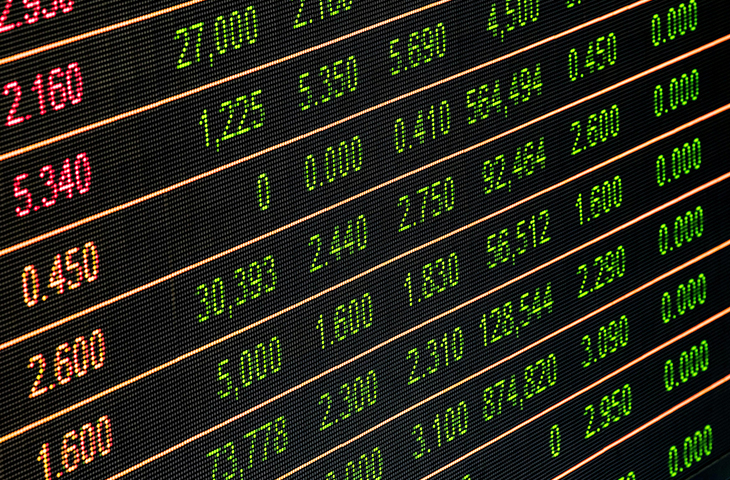The Trump Hedge: 4 Ways Investors Are Seeking Downside Protection Amid Washington's Tariff Noise

Anna Kim/Getty, Mutlu Kurtbas/Getty, Chip Somodevilla/Getty, Tyler Le/BI
- Trump's tariffs on Canada, Mexico, and China cause market volatility and investor concern.
- Markets view tariffs as a negotiation tactic, but unpredictability creates investor uncertainty.
- Investors explore strategies like defined outcome ETFs to manage volatility and protect gains.
Markets hoped to call President Donald Trump's bluff on tariffs, assuming it was a negotiation tactic. Or, at most, they would be implemented precisely, targeting industries or products that directly compete with domestic manufacturers.
But if it really is just a game of chicken, it's gone too far for the market's comfort. Sunday's comments from the President, admitting that there could be pain from trade wars after announcing 25% blanket tariffs on Canada and Mexico, excluding Canadian energy at 10%, and another 10% on China, sent the stock market plunging in the first trading hour. Luckily, a slight recovery came quickly as news of a 30-day delay on Mexico's tariffs made headlines within an hour of the trading day, halting a stepper plunge, followed by more news of a delay on Canadian tariffs.
The truth is that markets still hope that tariffs are a negotiating tactic, and the delays may have reinforced that perception.
Either way, there's a difference between volatility caused by free market capitalism versus Washington's manufactured chaos, and investors are digesting that reality. The former is easier to predict: there are indicators, strategists, and economists who come to the rescue, providing some guidance and creating a level of consensus. With tariffs, no one has a clue what to anticipate. The direction can change overnight by a mere post on X or Truth Social, said Ben Fulton, the CEO of WEBs Investments, whose firm trades volatility.
The rub is that there are two competing narratives. On one end, an America-first, Trumponomics agenda led by corporate tax cuts, deregulation, and protectionist policies is expected to ramp up the domestic economy. Conversely, tariffs could hurt profit margins for companies dependent on cheap imports and drive inflation higher for consumers.
The question is, which narrative does an investor bet on? The answer for many has been to try to straddle both.
Making a double bet
Fixed income has been the traditional diversifier against stocks. But with inflationary risks looming from tariffs and a budget deficit, the 10-year Treasury yield rose despite the Fed's latest rate cuts. So, it doesn't appear to be a strong hedging strategy, said Charlie Ripley, the vice president of portfolio management and trading at Allianz Investment Management. His advice is to move on to other things, one of which is derivative-based strategies that can be found through ETFs.
The main one is defined outcome ETFs, which create a buffer for losses at the cost of capping the upside. They have been growing more popular: net flows into these products surged from $313 million in November to $924 million in December and $1.2 billion in January, according to Morningstar data compiled by AllianzIM.
Johan Grahn, the head ETF market strategist at AllianzIM, whose firm has five different strategies with over 30 ETFs focused on risk management, says investors have been opting for deeper protection over the past 4 months, making its line of ETFs that provide a 20% downside buffer more popular than the ones that offer a 10% buffer, leading to 10 times greater inflows into the former over the latter. It means some investors are very nervous and seeking protection worthy of a recession, he said.
But capping the upside also means you don't get to fully participate in the market if things turn bullish. As a result, many people have been buying and dumping in a panic-sell frenzy, Fulton said, who has been getting an uptick in calls from clients wanting to manage equity volatility without giving up the gains. In that scenario, his answer has been to zoom out to smooth out all that volatility.
"When I started, it was in the 1980s, the markets were slower. I mean, we get enough volatility in a day that probably used to equal weeks of volatility," Fulton said. Between the news and the rapid movement of information, it's important to keep things in perspective, he noted.
Now, Fulton focuses on the 21-day realized volatility, a measure of the fluctuations in an underlying asset's returns over a month. This removes the daily twitches. His firm then pegs that against the asset's average long-term volatility over a 30-year period to determine whether volatility is too high in the short term, signaling that it's time to reduce equity exposure.
For example, with the SPDR S&P 500 ETF Trust's (SPY) long-term average volatility at 20% and the Invesco QQQ Trust (QQQ) at 22%, if either of their 21-day averages surpasses that, they reduce exposure by going to cash while maintaining some long exposure. The same is true on the flip side; if volatility falls below the long-term average, they increase exposure by going long on total return swaps, allowing them to receive payment when the underlying asset goes up or pay when it goes down.
"We're trying to figure out a way for people to stay fully invested but have the model adjust it," Fulton said. "It's like the Nest thermostat for the marketplace. Whether you need heat or air conditioning, let the thermostat figure this out for you or a model."
Si Katara, the CEO of TappAlpha, a fintech-based ETF provider, wraps zero-day options in an ETF that sells covered calls and collects the rising premiums from increased volatility to generate fixed-income-like returns. This strategy reacts to intraday market volatility, a popular strategy that has been catching wind. According to CBOE, the volume of SPX 0DTE options went from a mere 5% of volumes in 2016 to 43% by 2023.
"It's demand-driven. So retail has driven a lot of that," Katara said.
But all of these strategies should be in the context of how much time an investor has in the market. In other words, those who can hold a position for more than 18 months shouldn't be overly concerned with hedging strategies. Don't worry about it, said Fulton, keep investing and look at market sell-offs as great buying opportunities, just don't panic sell. It's really investors close to retirement or already retired and can't wait out the troughs that need to consider hedging their equities exposure.
However, for investors who have time in the market, a bullish outlook, and still want the downside protection, Grahn recommends considering a fourth option, which are ETFs that provide a buffer, but use a spread instead of capping upside gains, this means there's no limit to the upside on the underlying asset, but it must surpass a certain return, say upward of 2%, before investors can collect on the gains.

